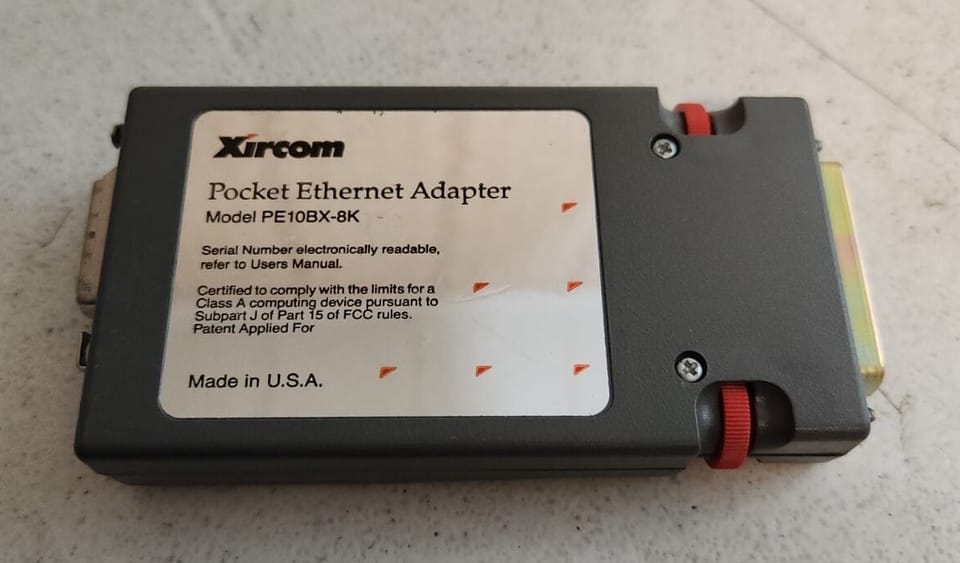DB25 #7 -- Xircom Pocket Ethernet

In our last installment in the 25 x DB25 for 2025 series, we looked at the LapLink parallel port cable. That cable and the companion LapLink software brought a parallel touch to serial (port) monogamy, at least as far as networking goes. Laplink was mostly used to keep a single lighweight laptop system synchronized with a single desktop.
It was clear almost as soon as laptops showed up that a laptop without a desktop is like a fish without a bicycle. By 1990, it was reasonable to swim upstream directly, as laptop modems had allowed for a decade, and connect directly to an Ethernet network. In fact, it was almost easier.
The first major inexpensive high-speed modem chipsets, like the Rockwell 2-chip solution for 14.4k and above, didn’t show up until the early 1990s. Provided you could find someone to connect to, Ethernet was cheaper to implement, faster, more reliable, and dramatically more flexible. No laptops came with Ethernet built-in before Apple’s PowerBook 500 in 1994. Few laptops before that had any expansion options that supported Ethernet.
There was another way. As early as 1991, IBM offered the Xircom Pocket Ethernet adapter as an option for the L40SX laptop. Xircom had come to the same conclusion as LapLink — the standard DB25 parallel port adapter was not wholly unsuitable as a general-purpose expansion. Xircom had one further problem, though. With laplink, each end was self-powered. With Ethernet, there was no way to reliably steal the power required from the parallel port. The answer was to include a little adapter to steal the power from the external keyboard port!
While USB is credited with killing off the parallel port, the serial port, and the keyboard port, the major innovation was not its generality, rather it’s ability to also provide to to 2.5W of power.
Ethernet for laptops and even palmtops soon moved to the PCMCIA form factor. Lack of expandability, however, has come full circle. Search for Pocket Ethernet today and you may turn up USB or Bluetooth adapters that provide Ethernet connectivity to smartphones and tablets.
Member discussion